
In today’s bustling marketplace, amidst a sea of products vying for consumer attention, labelling stands as a beacon of clarity. It’s more than just a tag or a sticker; it’s the product’s ambassador, bridging the gap between brand intent and consumer understanding.
Labelling, deeply intertwined with branding, plays a pivotal role in conveying essential product information, from its origin to its usage. It provides a snapshot, offering insights into what the product is, what it contains, and why it might be the perfect fit for the consumer. Labels are the first point of contact with consumers, often influencing purchasing decisions right at the point of sale.
In this article, we’ll embark on a comprehensive exploration of what labelling is. We will uncover its significance, its different types, components and elements, and some characteristics.
So, without further ado, let’s get started!
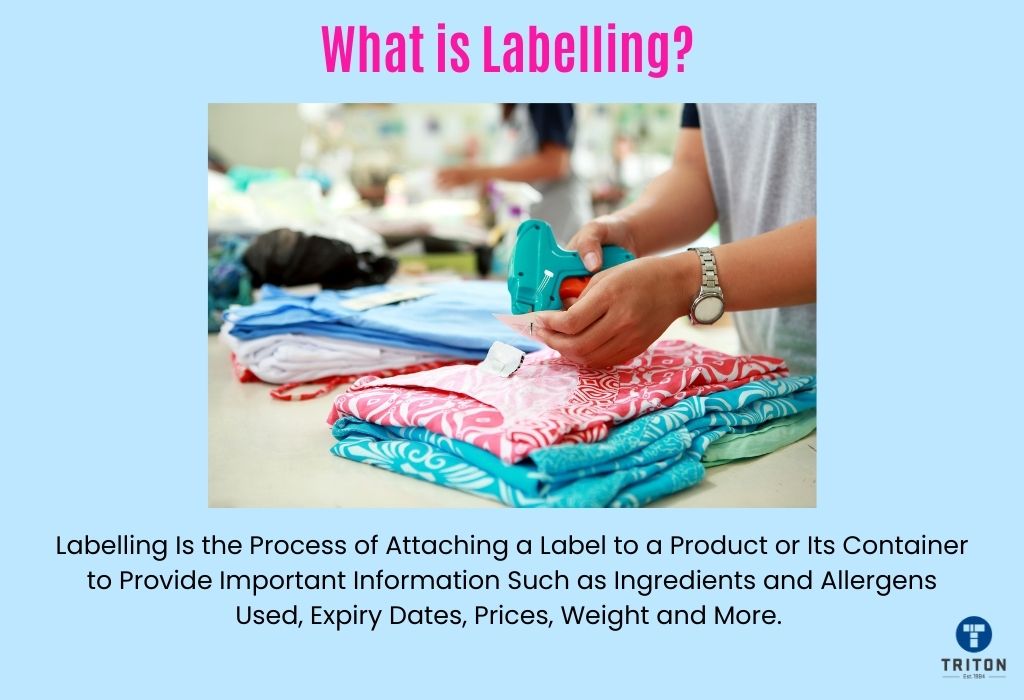
At its core, labelling is the process of attaching a label to a product or its container, providing essential information about it. A label is a piece of paper, metal, or any other material that communicates crucial details such as the product’s value, price, production information, expiry date, and more, all for the consumer’s benefit.
While it might seem like a simple concept, labelling is a culmination of art, science, and strategy. It’s not just about slapping on a name or a price; it’s about communicating the essence of a product in a way that resonates with potential buyers.
Imagine walking into a store and seeing rows upon rows of identical bottles. Without labels, it would be impossible to differentiate one from another, let alone make an informed purchase decision. Labels provide that differentiation, offering consumers a quick and easy way to identify and learn about products.
But labelling goes beyond mere identification. In a world where consumers are becoming increasingly conscious of their choices, labels serve as a means of transmitting all relevant information about the product to the user, building trust and loyalty. Labels also serve as a testament to a product’s quality, origin, and authenticity, giving it a competitive edge in the market.
For example, a label indicating that a product is organic, ethically sourced, or sustainably produced can greatly influence a consumer’s decision-making process, aligning their values with their purchases.
Furthermore, labelling also plays a pivotal role in meeting legal and regulatory requirements. Various industries have specific guidelines about the information that must be present on labels, including nutritional facts, allergen information, safety warnings, and usage instructions.
Failing to adhere to these regulations can result in legal consequences, including recalls and fines. Therefore, labels are not only a marketing tool but also a means of ensuring consumer safety and compliance.
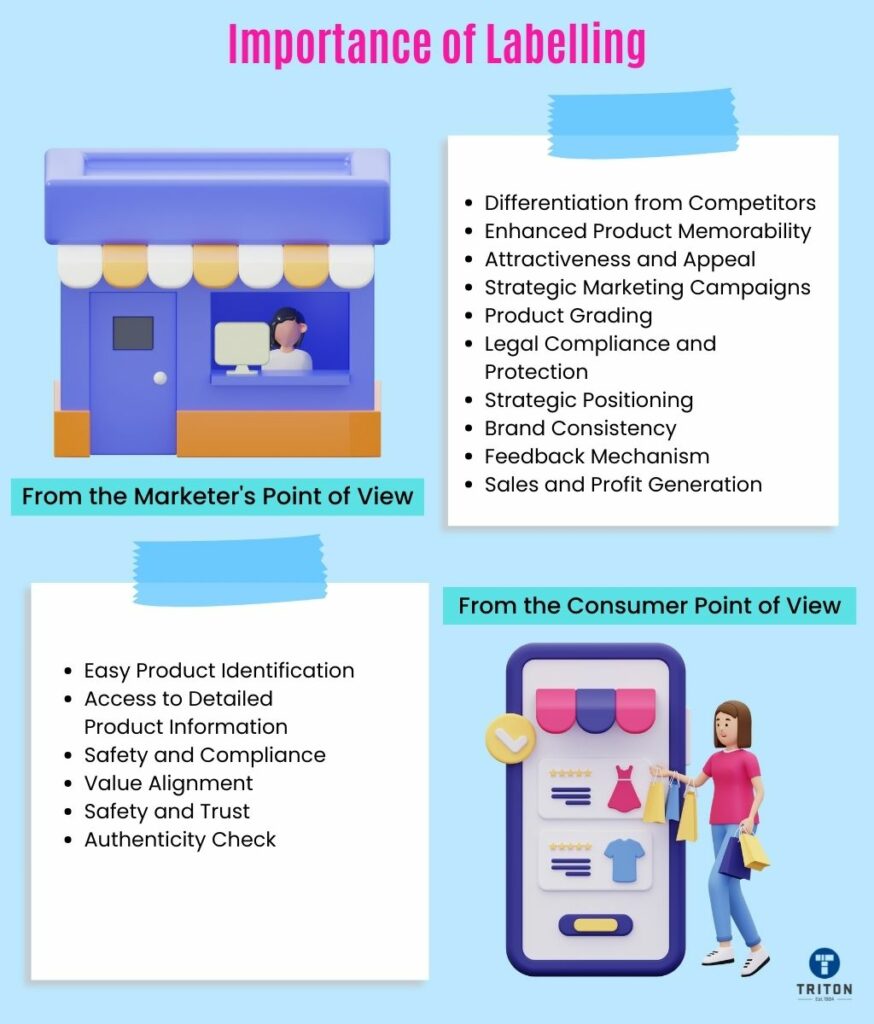
The significance of labelling extends far beyond its apparent function of identifying products. It plays a dual role, catering to marketers and consumers, each with its unique needs and expectations.
Let’s delve into the importance of labelling from these two perspectives:
In a saturated market, a unique label can set a product apart. It’s not just about the name or the logo; it’s about creating a distinct identity that resonates with the target audience, ensuring that the product stands out amidst competitors.
A well-designed label ensures that the product remains top-of-mind for consumers. It’s the visual representation of the brand, and when done right, it can make the product memorable, leading to repeat purchases.
Our article on best practices for designing perfect labels and barcodes offers many tips and tricks for creating impeccably designed labels and barcodes. This resource is certain to assist you in crafting well-designed labels effectively.
Aesthetically pleasing labels can captivate potential customers, drawing their attention and making them more likely to choose the product over others. The design, colour scheme, and even the texture can influence purchasing decisions.
Labels can be leveraged to amplify marketing efforts. Whether it’s a promotional offer, a limited-time discount, or a new feature highlight, the label can effectively communicate these marketing messages to consumers.
Labelling allows marketers to categorise products based on quality, size, or other criteria. This helps in targeting specific market segments more effectively and ensures that consumers know what they’re getting.
Adhering to legal obligations is crucial. Various regulations mandate specific information like allergen information, safety warnings, and usage instructions to be present on labels, ensuring transparency and consumer safety.
A well-designed label can position a product distinctively in the market, setting it apart from its competitors. It acts as a silent salesman, communicating the brand’s value proposition to potential customers.
Labels ensure that the brand message remains consistent across various products and platforms. This consistency reinforces brand recall and loyalty.
Modern labels, especially those with QR codes or digital tags, can provide valuable feedback. Marketers can track product popularity and consumer preferences and gather direct feedback through these interactive labels.
Effective labelling can lead to increased sales. When consumers clearly understand the product’s benefits and features, they’re more likely to purchase, leading to higher profits for the marketer.
In a store filled with myriad products, labels help consumers quickly identify the brand or product they’re looking for, saving time and reducing purchase friction.
Detailed labels offer consumers insights into the product’s features, benefits, and potential risks. This information aids consumers in making purchasing decisions that align with their needs and values.
With clear and concise labelling, consumers can make decisions that serve their specific needs. For instance, someone looking for a sugar-free option can easily identify it through the label.
Labels ensure that consumers are aware of any potential risks associated with a product. For example, allergen information, safety warnings, and usage instructions are crucial for consumer safety.
Modern consumers are becoming increasingly conscious of their purchasing decisions. Labels indicating attributes like ‘organic’, ‘ethically sourced’, or ‘sustainably produced’ can influence consumers, aligning their values with their purchases.
Beyond just the basics, labels provide a wealth of information. From brand messages and promotional offers to usage benefits and safety precautions, labels ensure that consumers have all the information they need at their fingertips.
Transparent labelling builds trust. When consumers can see all the ingredients, production dates, and other essential details, they feel more confident about the product’s safety and quality.
In a market where counterfeits are rampant, labels serve as a tool for consumers to verify the authenticity of their purchases. Security features on labels, like holograms or unique codes, provide this assurance.
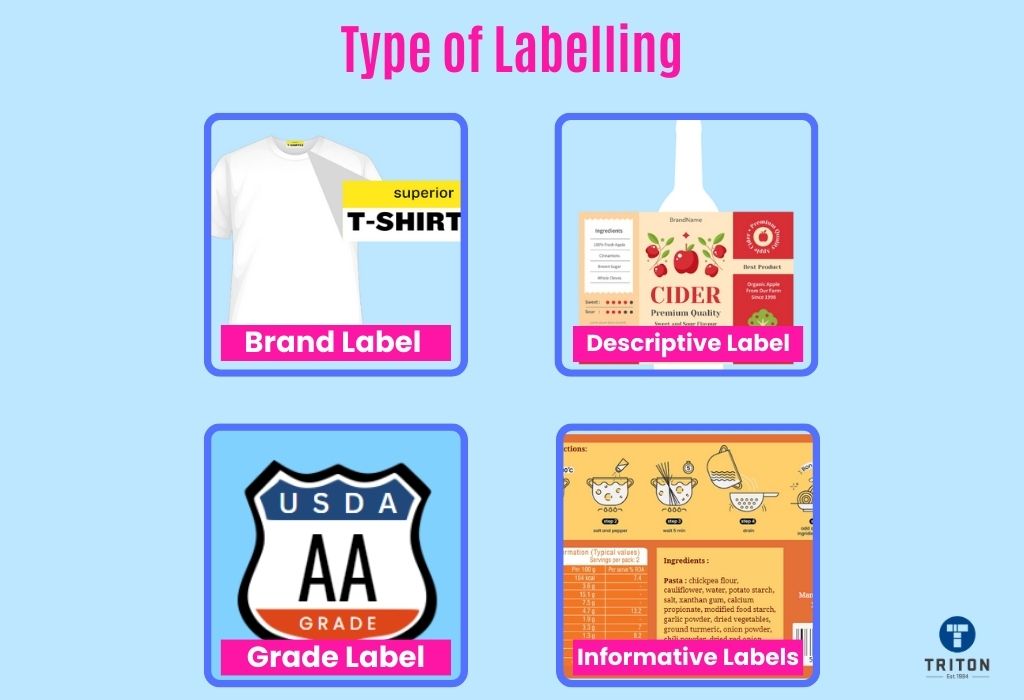
In the world of marketing and branding, labelling isn’t a one-size-fits-all approach. Different products and industries require different types of labels, each serving a unique purpose. Here’s a closer look at the various types of labelling:
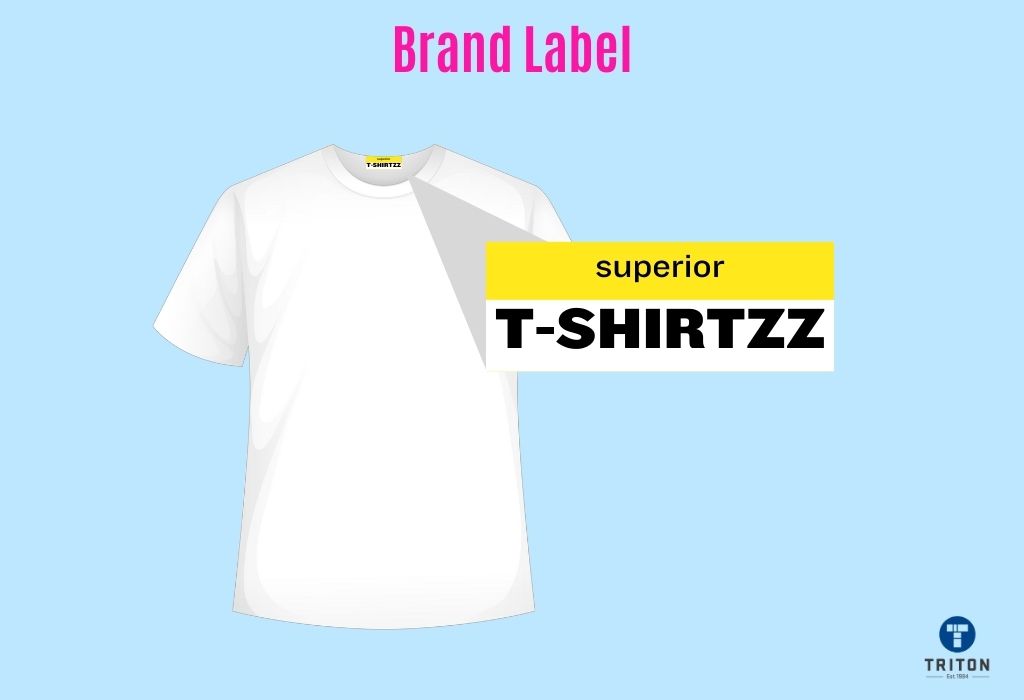
Brand labels serve as the visual cornerstone of a brand’s identity. Through distinct design elements, typography, and logos, they encapsulate the essence of a brand, offering immediate recognition among consumers.
Take, for instance, the iconic swoosh of Nike. When you see that simple yet distinctive mark on a pair of shoes or apparel, you instantly associate it with athleticism, quality, and style. Similarly, the symbolic polo player silhouette on a Ralph Lauren shirt not only signifies luxury and class but also evokes a sense of timeless elegance.
Brand labels are more than mere symbols; they are powerful tools that foster brand loyalty and facilitate brand recall. By embedding themselves in the consumer’s psyche, they ensure that products remain top-of-mind, driving repeat purchases and differentiating them in a competitive marketplace.
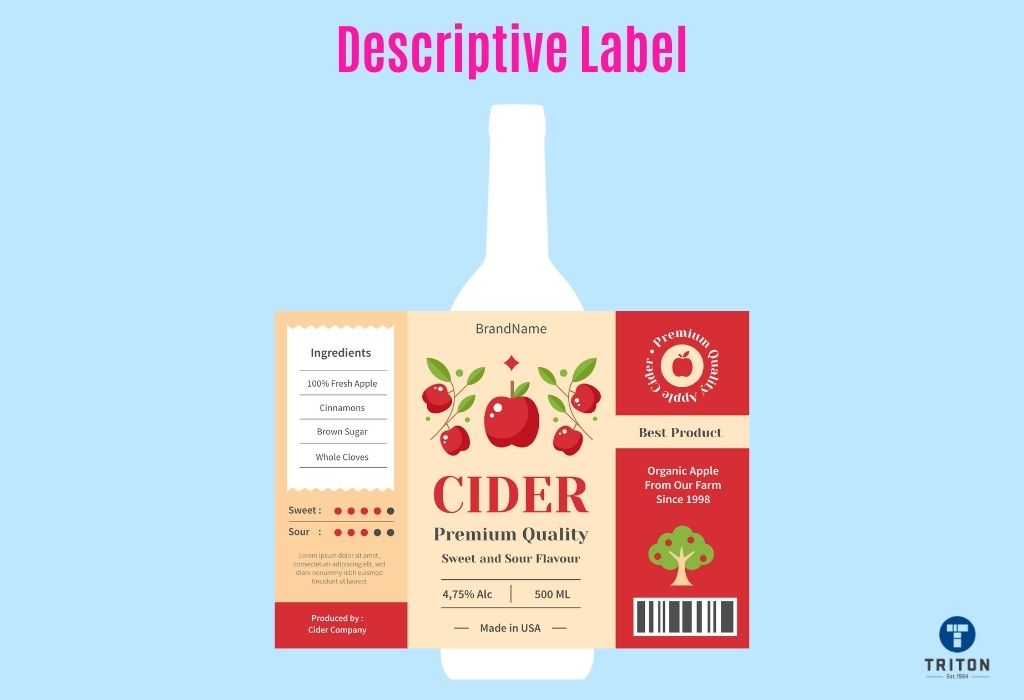
Descriptive labels serve as comprehensive informational guides, detailing the various facets of a product. These labels are meticulously crafted to indicate significant information about a product, ensuring consumers are well-informed about their purchase.
Descriptive labels are both descriptive and illustrative. They list the product ingredients and provide insights into its distinct uses, instructions for optimal use, and any necessary precautions. Moreover, they often include essential details like the producer’s information, date of manufacture, weight, size, and the product’s value.
Industries like pharmaceuticals and cosmetics particularly underscore the significance of descriptive labels. Pharmaceuticals, for instance, come with labels detailing their composition, recommended dosage, potential side effects, and expiration date. Similarly, cosmetic products often emphasise organic ingredients, advantages, and application instructions.
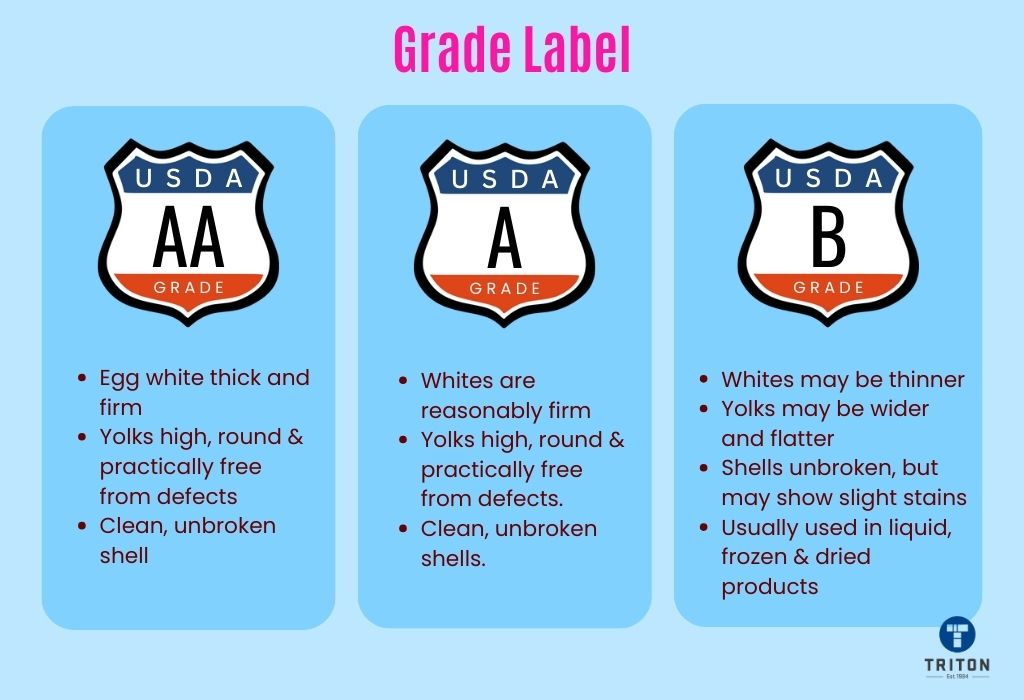
Grade labels serve as clear indicators of a product’s quality, ensuring consumers have a transparent understanding of what they purchase. These labels categorise products based on specific criteria, such as quality, size, or performance, offering a clear understanding of where the product stands compared to others.
Grade labels are particularly common on food products.
Eggs, for example, can be categorised as “Grade AA,” “Grade A,” or “Grade B,” each grade reflecting differences in quality, size, and appearance.
A “Grade AA” egg signifies that it’s of the highest quality, with a thick white, a centred yolk, and a clean, unbroken shell. A “Grade A” egg signifies that the whites are reasonably firm, with a round yolk practically free from defects and a clean, unbroken shell. A “Grade B” egg signifies a lower quality egg with thin whites, flatter yolks and unbroken shells with slight stains.
Grade labels play a crucial role in ensuring transparency in the market. By providing a clear grading system, consumers can make informed decisions, aligning their purchases with their needs and expectations.
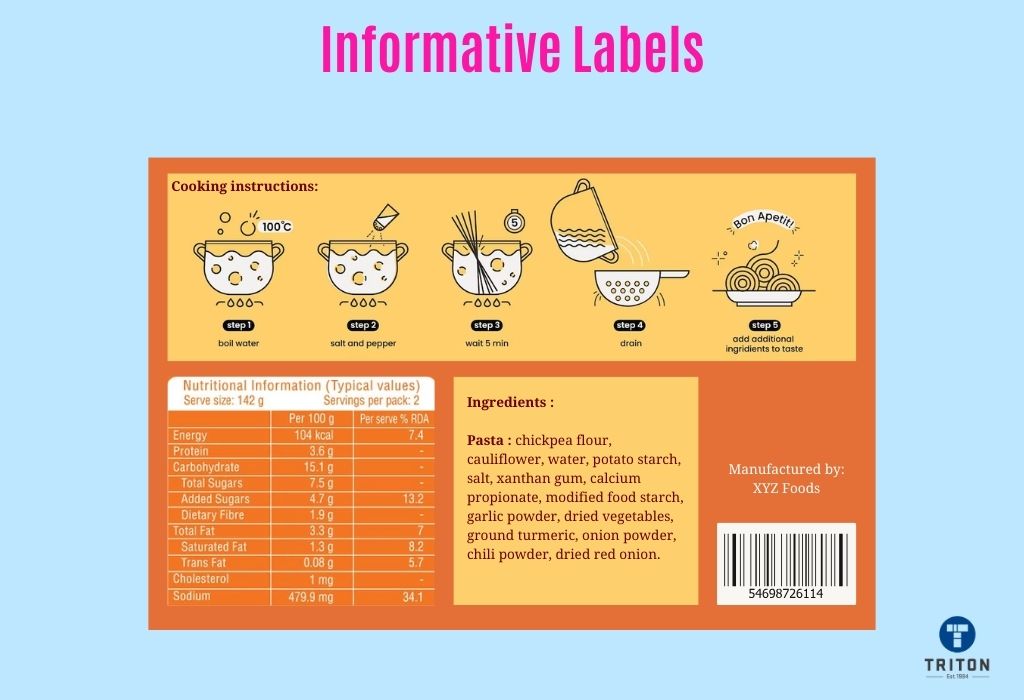
Informative labels act as comprehensive guides, offering a wealth of information about the product. They encompass everything from usage instructions and safety precautions to additional benefits or related recipes. Informative labels are especially valuable for products that might be new to consumers or have specific usage guidelines.
Take, for instance, a pack of gourmet coffee beans. An informative label on such a product will delve into the nuances, highlighting the region where the beans were cultivated, the altitude that influenced their flavour profile, the roast level, and even tasting notes like “hints of caramel and dark chocolate.”
The label will also provide brewing instructions tailored to different methods, be it French press, pour-over, or espresso, ensuring that the consumer can extract the perfect cup every time.
In the realm of consumer products, informative labels are invaluable. They educate and enrich the consumer’s interaction with the product, fostering a deeper brand connection and holistic understanding of the product and ensuring optimal product usage.
Designing these different types of labels can indeed pose challenges and consume a significant amount of time. There’s a multitude of elements, ranging from intricate graphics to essential information, that demands careful consideration. In our digital age, however, we’re fortunate to have powerful software solutions that can simplify the process.
One such remarkable solution is Seagull Scientific’s BarTender software, renowned for its label design and printing prowess. BarTender software doesn’t just facilitate the creation of visually appealing labels replete with stunning graphics and text; it goes further by streamlining and automating the entire labelling process. With the added capability to seamlessly integrate barcodes and even RFID tags, this software emerges as a true trailblazer in label design, management, and printing.
Here at Triton, we understand the significance of equipping your company with the right tools. That’s why we proudly offer all four editions of BarTender Software, catering to various requirements. We provide Starter Edition, Professional Edition, Automation Edition and Enterprise Edition.
And that’s not all.
We also provide the latest addition to the BarTender family—BarTender Cloud. This cloud-based solution brings a new level of convenience and flexibility to your label printing endeavours.
Our commitment goes beyond just providing the software; we aim to offer these solutions at the most competitive prices, ensuring that your journey towards revolutionising label printing is both affordable and rewarding.
So, choose Triton as your partner in embracing the transformative capabilities of BarTender Software. Elevate your label printing experience, simplify complex processes, and embark on a journey of efficiency and innovation that will redefine how you approach to label design and printing.
In the vast world of commerce, where countless products compete for a spot in consumers’ lives, the importance of labelling cannot be overstated. Labelling, while seemingly straightforward, plays a multifaceted role in the world of products and branding. It’s not just about identification; it’s about communication, assurance, and even persuasion.
Here’s a closer look at the various functions of labelling.
Labels are often the first point of contact between a brand and its potential customers. A well-designed label, with its distinct logo and typography, ensures the brand is immediately recognisable amidst a sea of products. It’s the visual representation of the brand’s promise to its consumers.
Labels provide a detailed account of the product. From its ingredients to its usage instructions, a label ensures that the consumer knows what they are purchasing. This transparency builds trust and ensures that the product is used correctly and safely.
Labels are silent salespeople and can be powerful promotional tools. Limited-time offers, discounts, or even new feature highlights can be effectively communicated through labels. They can entice potential buyers, offering them more value or introducing them to new aspects of the product.
As discussed in the previous section, labels can indicate the quality or grade of a product. This grading system ensures that consumers can make informed decisions based on their needs and preferences.
Labels play a crucial role in ensuring consumer safety. Listing out potential allergens, safety precautions, and usage instructions ensures that consumers are well-informed and can use the product safely.
Many industries have stringent regulations regarding product labelling. Whether it’s the food industry, which requires nutritional information, or the cosmetic industry, which mandates the listing of ingredients, labels ensure that brands remain compliant with these regulations.
With the advent of technology, labels have evolved. Modern labels have QR codes or RFID tags that facilitate real-time product tracking, engendering enhanced supply chain efficiency and offering invaluable consumer insights.
In a world rife with counterfeits, labels serve as a mark of authenticity. Special features on labels, such as holograms, unique codes, or even specific design elements, can assure consumers of the product’s genuineness.
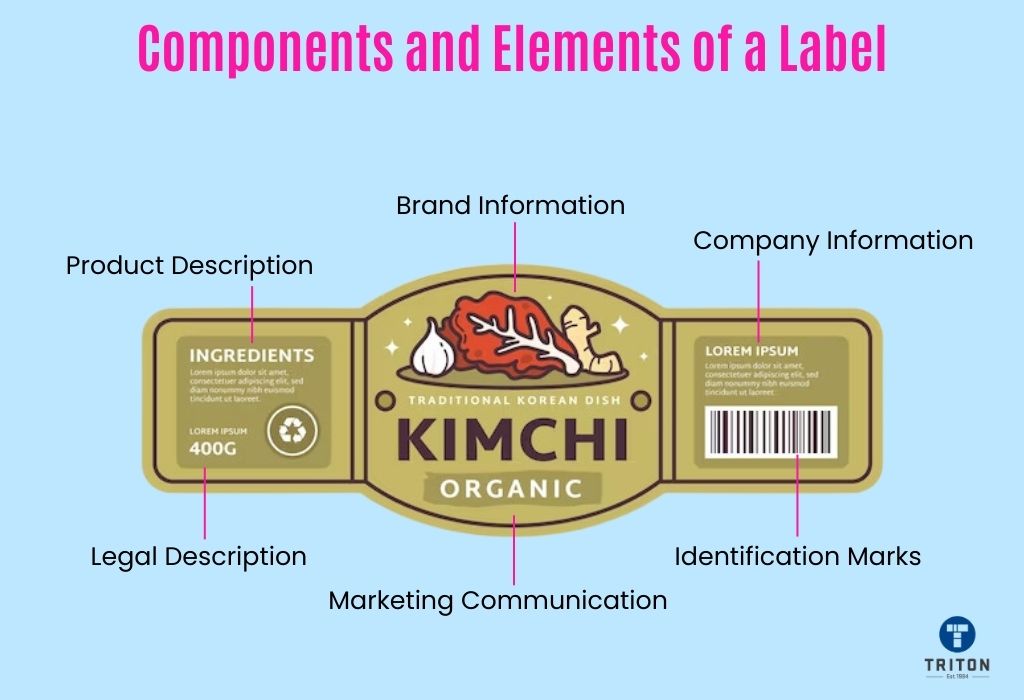
A label is more than just a piece of paper or fabric attached to a product. It’s a meticulously designed entity, combining various elements to convey essential information about the product and the brand.
Each label component plays a specific role, ensuring consumers receive a comprehensive understanding of the product they’re considering. Let’s delve into the primary components and elements that constitute a label.
The brand name and logo are the most prominent elements on a label. They serve as the primary identifiers of the product, ensuring immediate recognition among consumers. The logo encapsulates the brand’s ethos and values, making it a crucial element for brand recall and loyalty.
The product name and description provide a brief overview of the product. It informs the consumer about what the product is and sometimes how it differs from other similar products.
A clear and concise product name and description can aid in the decision-making process, ensuring that consumers clearly understand what they’re purchasing.
Ingredients or component element lists down all the components used in the product. It ensures transparency and allows consumers to make informed choices, especially if they are allergic to certain ingredients or are looking for specific components.
Ingredients or component list is especially crucial for food, cosmetic and pharmaceutical products.
Our guide on understanding allergen labelling compliance will provide you with essential insights and knowledge to navigate the critical aspects of allergen labelling regulations effectively.
The usage instruction section provides specific guidelines on handling and using the product effectively and safely. These instructions ensure that consumers derive maximum benefit from their purchase.
Certain products might have associated risks if not used correctly. Labels often carry safety precautions and warnings to inform consumers about potential hazards and how to avoid them.
Many countries have legal requirements to mandate certain information to be displayed on labels. This information can be a statutory warning, consumer protection labelling, or an additional warning label.
For instance, products containing hazardous chemicals will carry a “Danger (Skull and Crossbones)” symbol, indicating potential harm if mishandled.
Did you know Skull and Crossbones is one of nine GHS signal words? If not, we highly recommend checking out our article on GHS label requirements. This article will provide an in-depth overview of GHS label requirements like hazard signs, GHS hazard statements, and more.
Manufacturing and expiry data make consumers aware of the product’s shelf life, ensuring that they use it within a safe timeframe. These dates are crucial for perishable products.
The label often indicates the price of the product and its quantity or size. This information helps consumers assess the value they are getting for their money.
The labels often feature identification marks such as barcodes (UPC, EAN) and holograms.
Barcodes facilitate retail operations, inventory management, product tracking, and data collection. Some labels also feature different types of barcodes, such as QR codes and Data Matrix codes, which can provide additional information or promotional offers when scanned.
Check out our barcode learning centre to enhance your knowledge of barcode technology.
Holograms or other special design elements are placed on the label to assure consumers about the authenticity of the product they are purchasing.
Labels might also showcase certifications and seals that the product has received, such as “Organic,” “Cruelty-Free,” or “Fair Trade.” These certifications and seals boost customer confidence and can influence consumers who prioritise certain values in their purchasing decisions.
The label often features the manufacturer’s or distributor’s contact information, including address, phone number, and website. This information establishes a direct line of communication between the brand and its consumers. With contact information on hand, customers can easily reach out to the manufacturer or distributor for feedback, complaints, or further inquiries.
With growing environmental consciousness, many labels now include information about the product’s environmental impact, recyclability, or sustainable sourcing practices.
In essence, every element of a label serves a distinct purpose, ensuring that consumers are well-informed, products are used effectively and safely, and brands can establish a strong connection with their audience. A well-designed label, therefore, is not just a regulatory requirement but a powerful tool for brand building and consumer engagement.
The role of product labels extends beyond mere identification. They serve as a brand’s silent salesperson, communicating essential information and influencing purchasing decisions. To be truly effective, a label must possess certain characteristics.
Here’s a deeper look into the defining traits of a highly effective label:
An effective label is easy to read. It uses clear fonts, avoids clutter, and conveys the desired information without overwhelming or confusing the consumer.
Every word, image, and design element is chosen with a clear purpose in mind, ensuring that the consumer can quickly identify the brand, understand the product, and access any critical information without straining their eyes.
While the primary purpose of a label is informational, aesthetics plays a pivotal role in capturing consumer attention.
Engaging design elements, including font, colour, graphics, shape, and size, can make a product stand out on the shelf.
An eye-catching label design can draw consumers in, making them more likely to pick up the product and examine it further. It also creates a positive first impression, setting the stage for a potential purchase.
A comprehensive label goes beyond the basics.
While it includes expected information like product name, nutritional content, allergens, ingredients, and usage instructions, it also provides essential details that might interest the consumer. This could include sustainability practices, ethical sourcing details, or any unique selling propositions (USPs) that set the product apart.
Trust is integral to brand loyalty.
An effective label provides transparent information, not just about the product but also about its producers. This includes certifications, origin details, and other information that can enhance the product’s credibility.
Moreover, labels should provide only honest and accurate information. Misleading or false claims can lead to consumer distrust and potential legal repercussions.
While each product variant might have unique characteristics, the overarching brand theme or design should remain consistent. This ensures that consumers can easily identify the brand, regardless of which specific product they are looking at.
An adaptable label design maintains brand consistency while allowing for variations in product details.
Modern labels often incorporate interactive elements like QR codes. These codes can be scanned by smartphones to provide additional information, promotional offers, or even augmented reality experiences.
Such interactive tools provide an avenue for deeper consumer engagement, offering additional information or immersive experiences.
Brands that operate globally need to ensure that their labels resonate with different cultures. What works in one country might not be effective or even appropriate in another. This might involve tweaking design elements, language, or even the information presented to align with local laws, preferences and sensibilities.
An effective label adheres to the regulatory requirements of its industry and the region it’s sold in. This adherence safeguards the brand from potential legal entanglements and builds trust with informed consumers.
Both “labeling” and “labelling” are correct. “Labeling” is the preferred spelling in American English, while “labelling” is commonly used in British English.
Product labelling serves to communicate essential information related to a product to the consumer. This includes details about the product’s origin, ingredients, usage instructions, safety precautions, etc.
Yes, many countries have specific regulations governing product labelling. Some of the prominent regulatory authorities include the Food Standards Australia New Zealand (FSANZ), the U.S. Food and Drug Administration (FDA), and the UK Food Standards Agency (FSA). These bodies ensure that consumers receive accurate and essential information.
Mandatory information on food labels differs as per country regulations. However, common details usually include the product’s name, list of ingredients, use-by or best-before date, manufacturer details, statutory warnings, country of origin, and nutritional information.
Labelling plays a crucial role in brand recognition, loyalty, and recall. A well-designed label can differentiate a product from its competitors and convey the brand’s ethos and values to consumers.
Yes, imported products often need to adhere to the labelling standards of the country in which they are being sold. This can include providing details in the local language, adhering to specific measurements, and ensuring compliance with local safety and quality standards.
Labels provide critical information such as usage instructions, safety precautions, potential allergens, and more. This ensures that consumers can use the product safely and effectively.
Check out our article on allergen labelling compliance to learn how to properly mention allergens in food products.
Barcodes facilitate retail operations, assist in inventory management, and enable product tracking. Common types of barcodes include UPC (Universal Product Code), EAN (European Article Number), and QR codes.
Several certifications and seals, such as “Organic” or “Fair Trade,” are verified by respective authorities to ensure products meet specific standards. Consumers can usually check the authenticity of these certifications on the certifying body’s website.
If you suspect that a product label is misleading or contains false information, you can report it to regulatory authorities in your country. They investigate such claims and take necessary actions against brands or manufacturers that violate labelling standards.
In today’s dynamic marketplace, labelling has emerged as more than just a tool for identification; it’s a powerful communicator, bridging the gap between brands and consumers. As we’ve journeyed through its intricacies, the undeniable significance of labelling in the modern market becomes evident.
Labelling is not just about conveying information; it’s about building trust, fostering brand loyalty, and guiding informed consumer choices. With technological advancements, labelling is continually evolving, integrating interactive elements like QR codes and RFID tags, offering consumers richer, more immersive experiences. These innovations not only enhance consumer engagement but also reflect the adaptability of brands in this digital age.
Check out our guide on QR codes vs. RFID tags to learn the differences between the two technologies.
As we look to the future, the canvas of labelling will undoubtedly evolve, but its core purpose—to inform, assure, and resonate—will remain unchanged. In wrapping up our exploration, it’s evident that a label carries immense weight in the world of commerce, making it an indispensable asset in the brand-consumer relationship.
Melbourne
Brisbane
Phone 1300 558 438
Live Chat – Widget below
Melbourne
Brisbane
Phone 1300 558 438
Live Chat – Widget below